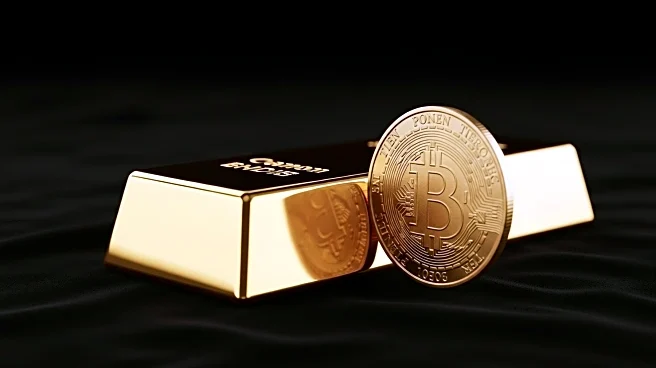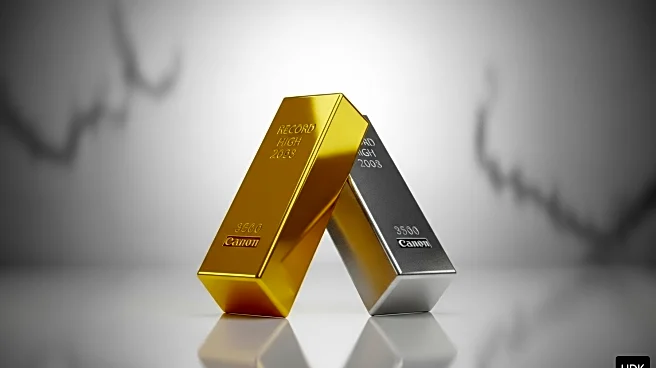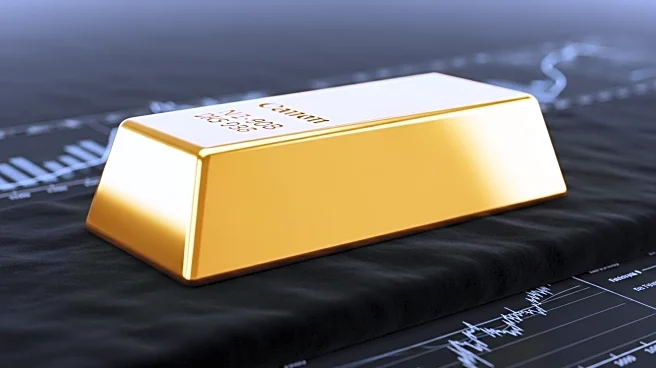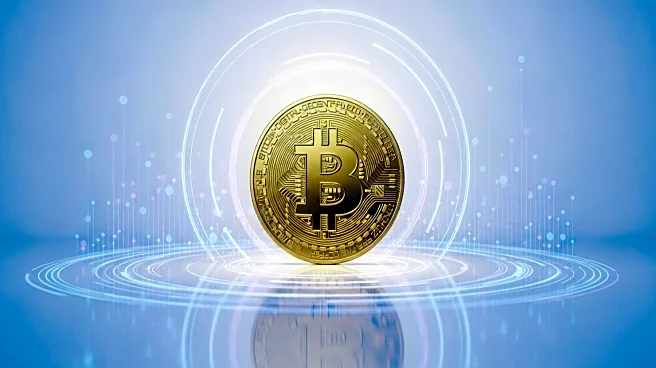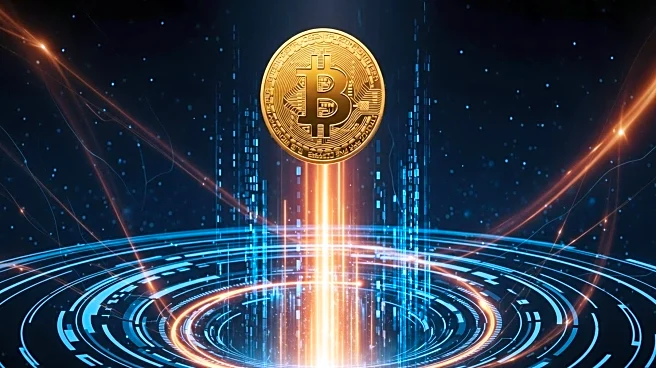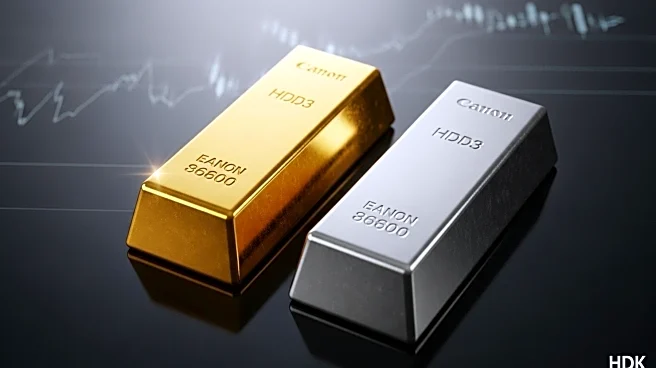What is the story about?
What's Happening?
Gold prices have reached near-record highs, trading just below $3,900 per ounce as of October 3, 2025. This surge is attributed to a combination of factors including safe-haven demand due to geopolitical tensions, the U.S. government shutdown, and expectations of imminent Federal Reserve rate cuts. The price of gold has increased by approximately 47-50% year-to-date. Silver and platinum have also seen significant gains, with silver futures reaching a 14-year high and platinum hitting multi-year highs due to strong demand in the auto and jewelry sectors. Analysts from Goldman Sachs and other financial institutions remain bullish on gold, predicting further increases in the coming years.
Why It's Important?
The rise in gold prices reflects broader economic and geopolitical uncertainties that are influencing investor behavior. As a traditional safe-haven asset, gold is attracting investors looking to hedge against potential economic downturns and currency devaluation. The potential Federal Reserve rate cuts are also contributing to the bullish sentiment, as lower interest rates typically weaken the dollar and make gold more attractive. This trend has significant implications for the U.S. economy, affecting everything from consumer prices to investment strategies. Central banks and private investors are increasing their gold holdings, which could further drive up prices and impact global financial markets.
What's Next?
Looking ahead, the market is closely watching the Federal Reserve's next moves, with traders pricing in nearly 100% odds of a rate cut by the end of the month. This could further boost gold prices if realized. Additionally, ongoing geopolitical tensions and economic data releases will continue to influence market dynamics. Analysts suggest that if current trends persist, gold could surpass $4,000 per ounce by mid-2026. The mining industry is also responding to these price changes, with major companies experiencing leadership shifts and evaluating production strategies in light of the current market conditions.
Beyond the Headlines
The current surge in gold prices highlights the complex interplay between economic policy, geopolitical events, and market psychology. The increased demand for gold as a safe-haven asset underscores the lack of confidence in traditional financial instruments and currencies. This shift could lead to long-term changes in how investors allocate their portfolios, potentially increasing the role of precious metals in global finance. Additionally, the environmental and ethical implications of increased mining activity may come under scrutiny as companies ramp up production to meet demand.
AI Generated Content
Do you find this article useful?


